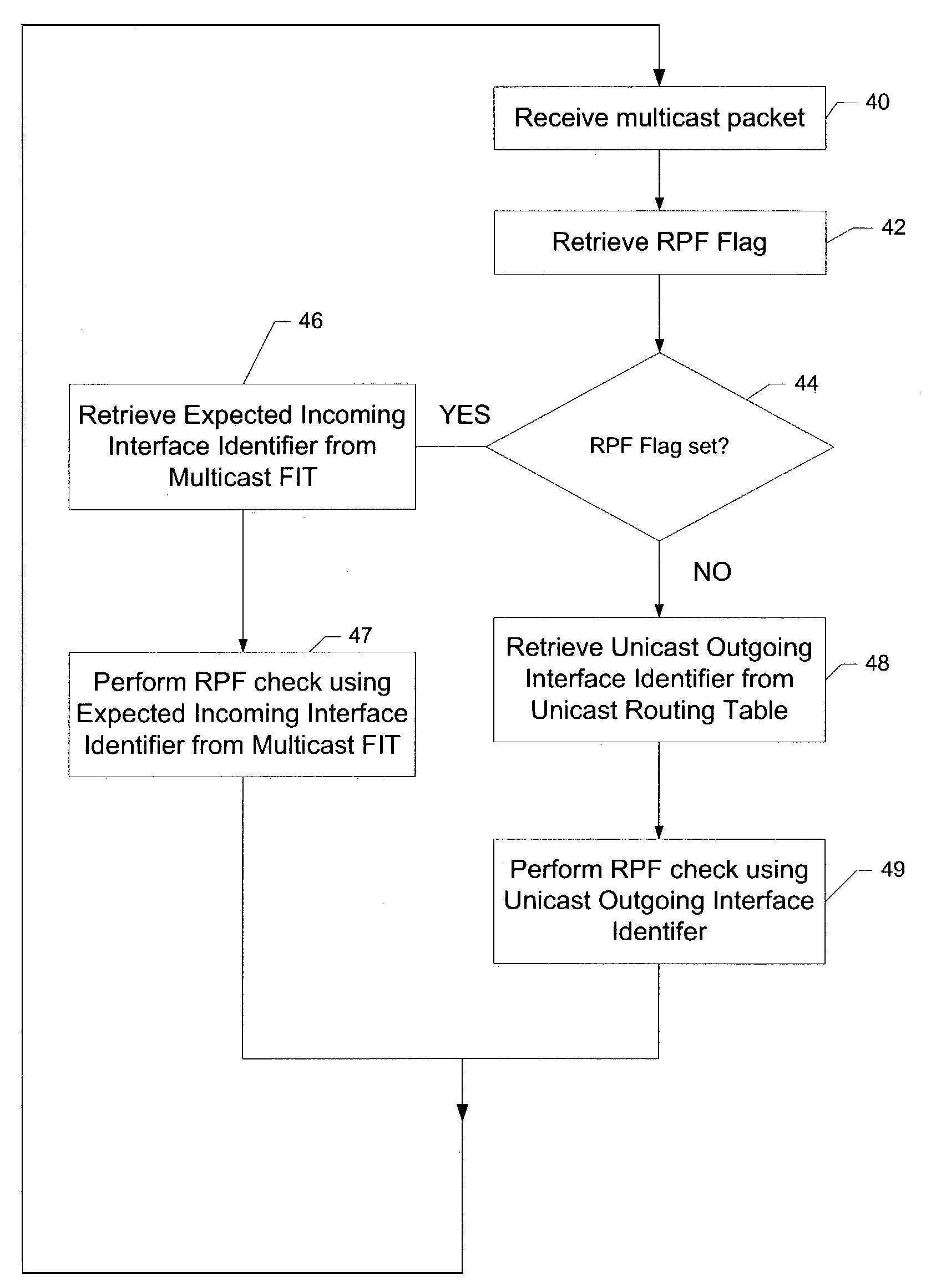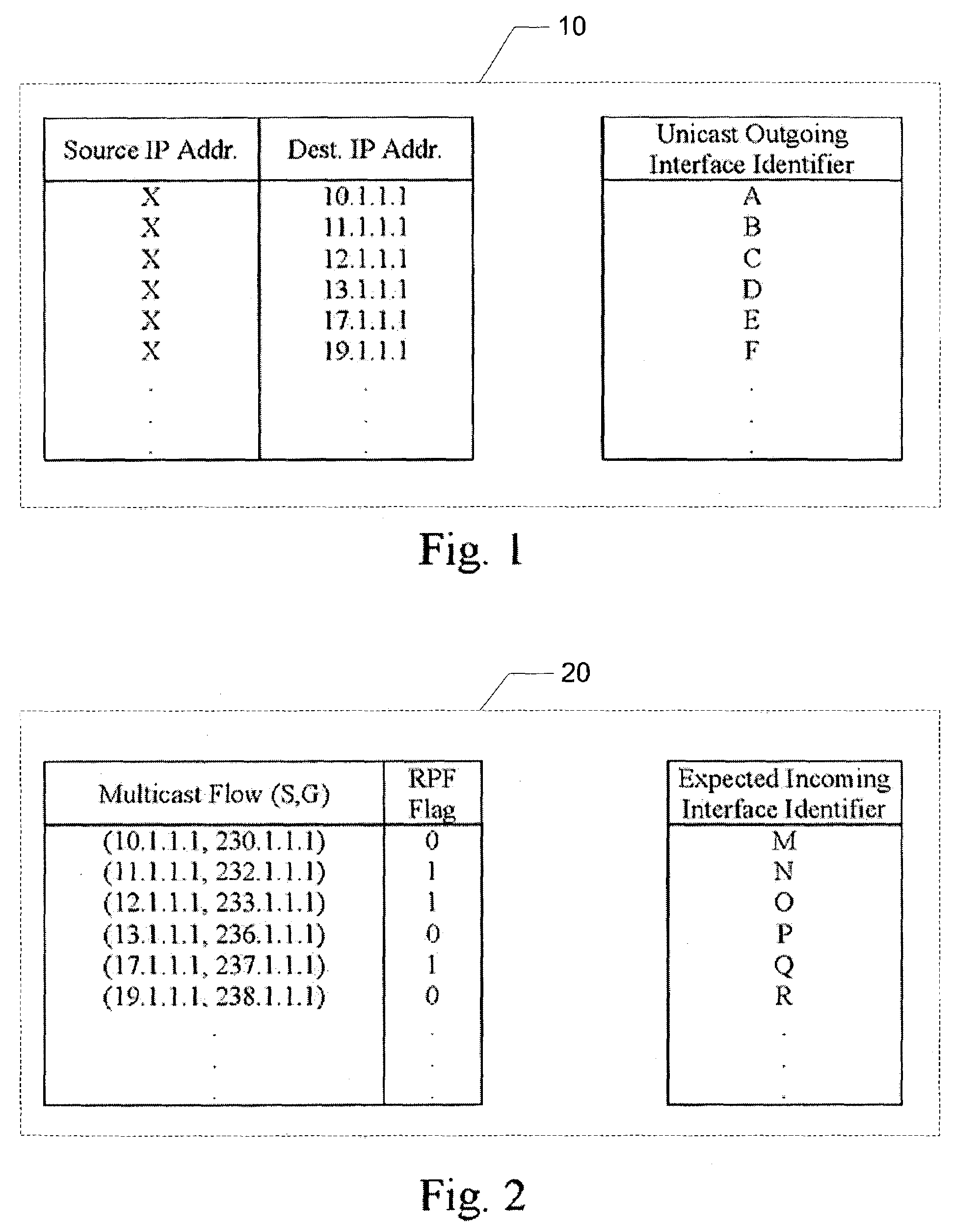Efficient reverse path forwarding check mechanism
a forwarding check and reverse path technology, applied in the field of computer networking, can solve the problems of affecting the delivery of multicast packets, unable to handle route changes well, and inability to quickly update the forwarding table entries of many routers, etc., and achieve the effect of rapid convergence of new network topology
- Summary
- Abstract
- Description
- Claims
- Application Information
AI Technical Summary
Benefits of technology
Problems solved by technology
Method used
Image
Examples
Embodiment Construction
[0017]To avoid potentially disastrous multicast routing loops, every multicast router must verify that a multicast packet has arrived on an expected incoming interface before it forwards the packet to the appropriate outgoing interfaces. If the multicast packet did not arrive on the expected incoming interface, the packet will be discarded. The process of verifying whether a multicast packet has arrived on the expected incoming interface is usually referred to as a Reverse Path Forwarding (RPF) check.
[0018]Naturally, the expected incoming interface can vary from one multicast flow to another. In addition, the expected incoming interface can vary according to network topology and other factors. For example, in Protocol Independent Multicast-Sparse Mode (PIM-SM), the expected incoming interface for a given multicast flow (S,G) depends on factors such as:[0019]whether the router receiving the (S,G) packets is the Rendezvous Point Router (RP) associated with the multicast group G; and[0...
PUM
 Login to View More
Login to View More Abstract
Description
Claims
Application Information
 Login to View More
Login to View More - R&D
- Intellectual Property
- Life Sciences
- Materials
- Tech Scout
- Unparalleled Data Quality
- Higher Quality Content
- 60% Fewer Hallucinations
Browse by: Latest US Patents, China's latest patents, Technical Efficacy Thesaurus, Application Domain, Technology Topic, Popular Technical Reports.
© 2025 PatSnap. All rights reserved.Legal|Privacy policy|Modern Slavery Act Transparency Statement|Sitemap|About US| Contact US: help@patsnap.com



